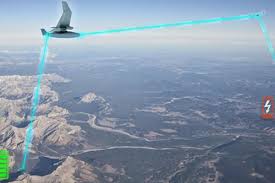
Breaking News
 $100? $200? $300? - How Catastrophically High Will The Price Of Oil Go
$100? $200? $300? - How Catastrophically High Will The Price Of Oil Go
 Trump Vetoed Israeli Plan To Assassinate Ayatollah Khamenei: Report
Trump Vetoed Israeli Plan To Assassinate Ayatollah Khamenei: Report
 The BIGGEST LIE You Were Never Meant to Find Out
The BIGGEST LIE You Were Never Meant to Find Out
 President Ibrahim Traoré's Bold Speech to the IMF Shocks the West (Publisher Recommended)
President Ibrahim Traoré's Bold Speech to the IMF Shocks the West (Publisher Recommended)
Top Tech News
 "We're Not Ready for AI Simulation" | Official Preview
"We're Not Ready for AI Simulation" | Official Preview
 $839 Ecoworthy Version 3: Best Value 48V Battery for 2025?
$839 Ecoworthy Version 3: Best Value 48V Battery for 2025?
 Feature-packed portable learning lab for makers puts AI within reach
Feature-packed portable learning lab for makers puts AI within reach
 Hydrogen Gas Blend Will Reduce Power Plant's Emissions by 75% - as it Helps Power 6 States
Hydrogen Gas Blend Will Reduce Power Plant's Emissions by 75% - as it Helps Power 6 States
 The Rise & Fall of Dome Houses: Buckminster Fuller's Geodesic Domes & Dymaxion
The Rise & Fall of Dome Houses: Buckminster Fuller's Geodesic Domes & Dymaxion
 New AI data centers will use the same electricity as 2 million homes
New AI data centers will use the same electricity as 2 million homes
 Is All of This Self-Monitoring Making Us Paranoid?
Is All of This Self-Monitoring Making Us Paranoid?
 Cavorite X7 makes history with first fan-in-wing transition flight
Cavorite X7 makes history with first fan-in-wing transition flight
 Laser-powered fusion experiment more than doubles its power output
Laser-powered fusion experiment more than doubles its power output
DARPA sets new records for sending power wirelessly

When it comes to military and humanitarian operations, obtaining a steady, reliable source of power is of paramount importance and this has only increased over time. As a result, the world's major military forces invest a staggering portion of their budgets to supply electricity, fuel, power plants, and all that goes with them as part of an increasingly complex supply line.
However, no matter how much power technology improves, there's still the ever-present problem of getting that power from Point A to Point B – a problem that is often insurmountable across the infamous last mile where power lines cannot be slung or pipelines buried and soldiers are often reduced to hauling jerry cans of fuel over rough country by hand and back muscle.

 How are holograms possible?
How are holograms possible?


